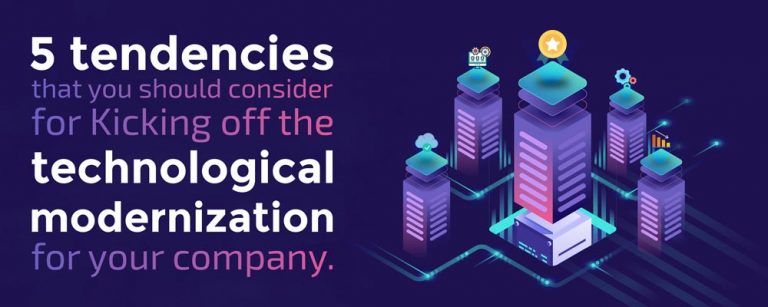On the road to digital transformation, companies must upgrade their systems and technology in order to improve efficiency and broaden their product offerings. In fact, 54% of utility companies are planning to replace their Customer Information System (CIS) within the next four years1. These projects are being driven by major trends which are reshaping the industry and paving the way for technology modernization

To maintain a successful operation, service providers require state-of-the-art technologies which can support their business needs in a changing world. When considering what technology to adopt as part of a business modernization strategy, the following trends should be considered.
Customer expectations
The satisfaction of customer expectations is currently the main force propelling service providers to modernize their technology solutions. Customer expectations are constantly changing and one of the big areas where service providers are falling behind is in digital communications. For this reason, supporting constant and effective interactions through a range of communication channels has become the primary goal for organizations wanting to stay relevant in an increasingly competitive environment.
In the utility sector, the modern customer expects self-management capabilities, effective communication through digital channels, and access to timely information such as service usage. If service providers want to maintain a strong relationship with their customers, they should aim to meet or exceed this new set of expectations with a customer-centric CIS solution.
Holistic solutions
Companies are looking for comprehensive solutions which cover critical aspects of their revenue generation cycle while simultaneously supporting strong customer engagement. These qualities can be found in the new generation of CIS solutions, as these have an expanded and advanced scope which enables holistic business management by natively including a wide range of functionalities.
Agile tools
Modern utilities need technology which provides agility and flexibility so they can react quickly to regulatory changes and market demands. To achieve this, they need the ability to easily extend the core functionality of their systems in order to implement new business models, develop new products and services, and adapt to industry requirements. On the other side of the coin, outdated legacy systems present a strategic risk due to their rigidity and the high costs of modifying or broadening their functional scope.
Demand for experts
A significant, but often overlooked, challenge for service providers is the fact that support for legacy systems usually requires expert assistance, but experts in obsolete technology are increasingly reaching the age of retirement. By continuing to use outdated solutions that are difficult to adapt to the modern market, companies are holding themselves back from meaningful change and growth. According to an industry survey by TMG Consulting, only 15% of companies are still using legacy systems(1), and this percentage is decreasing every day as challenges such as alternative business models and complex market structures gain momentum in the utility industry.
Cloud computing
The current business and technological landscape for service providers has created the perfect opportunity for cloud computing. This is why the number of service providers that are considering the implementation of a cloud-based solution has risen from 30% to 66% between 2017 and 2018(2). The flexibility and agility of the cloud are getting more accessible every day as the cloud services market matures and prices continue to fall. In saying this, service providers must also think about possible security concerns and the benefits of on-premises solutions when considering whether to make the jump.
Each of these trends is driven by different needs of the utility industry in its pursuit of business evolution. Likewise, the key drivers of technology modernization for service providers are rooted in these trends, creating a landscape of challenges and opportunities which must be strategically navigated to guarantee successful business development with the latest technological solutions.
(1) TMG Consulting. (2018). Utility Industry Disruption: 5 Profound Trends Impacting IT Modernization Projects. http://www.csforms.org/Conference42/Workshop%20pdfs/TMG.pdf
(2) TMG Consulting. (2018). Utility Industry Disruption: 5 Profound Trends Impacting IT Modernization Projects. http://www.csforms.org/Conference42/Workshop%20pdfs/TMG.pdf







